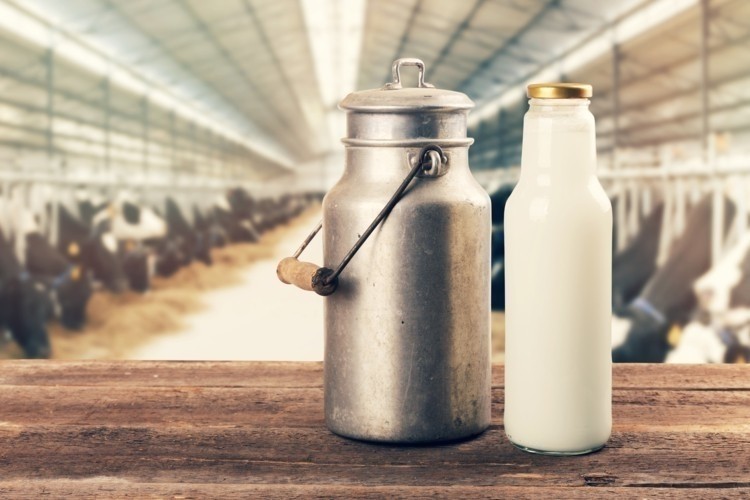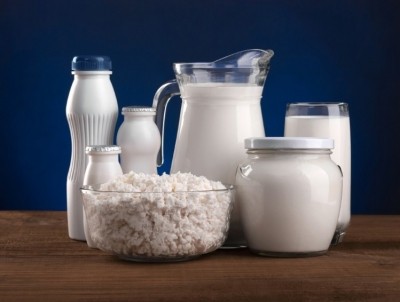Drug-filled dairy? India’s safety claims under fire again as report reveals ‘indiscriminate’ antibiotic misuse

The study was conducted in India and covered both the organised and unorganised dairy sector, from dairy farmers to processed milk brands. The focus covered antibiotic usage practices on dairy cows higher up in the dairy supply chain and the frequency of antibiotic testing further down the chain.
According to study co-author Rajeshwari Sinha, Deputy Programme Manager for Food Safety and Toxins, Centre for Science and Environment (CSE), the results showed that antibiotics were being administered ‘indiscriminately’ by Indian farmers to their cattle, often without any professional guidance or dosage advice.
“The farmers are self-administrating the antibiotics, and often do this as soon as the disease is suspected, e.g. teats start to swell or milk starts to smell. They inject the antibiotics in different combinations or doses – usually higher does than needed – and often do not wait for a veterinarian,” she told FoodNavigator-Asia.
“[Even if the cow is not sick], antibiotics are also used for mass prevention by farmers operating big farms [to] prevent mastitis, a common bacterial disease leading to infection/inflammation of the mammary gland.”
‘Rampant misuse’ of a wide variety of different antibiotics was found, including variants classed as ‘critically important’ such as third-generation cephalosporins, fluoroquinolones, aminoglycosides and penicillins.
Even more disturbingly, it was found that Indian farmers commonly sell milk obtained from an animal that is still on antibiotic treatment, greatly increasing the chances of antibiotic residues being present in milk that reaches the consumers.
“[If] withdrawal periods for specific antibiotics are not followed, the chances of [antibiotic residue presence] increases, although this also depends on the antibiotic used and the time of milking,” said Sinha.
“The milk is usually sold to state dairy cooperatives as well as directly to consumers, but farmers are mostly unaware about such a withdrawal period, [and also] cited that they cannot let go of their earnings for so many days (treatment + withdrawal period).
Although the study did not conduct individual testing on milk samples, Sinha stressed that the problem was relevant to all milk in India, both raw and processed, similar antibiotic use practices were found in both the organised and unorganised sector.
When asked about her thoughts based on these findings about FSSAI’s repeated assertions that milk in India was ‘safe to consume’, she cited a CSE statement that this was ‘certainly not as safe as the food regulator claims’.
“[In FSSAI’s own milk sample survey conducted in 2019, unsafe] levels of antibiotics were detected in 77 samples from 13 states and two Union Territories, suggesting that the problem is widespread; particularly for the processed milk sector with 40 out of 77 anitbiotic-contaminated samples being from processed milk,” said CSE.
Testing irregularity
A further problem highlighted by the study was that of inadequate antibiotics testing performed by dairy federations or milk unions, with most choosing to focus instead on what FSSAI has set stricter standards for: adulterants such as detergent, starch, maltodextrin and urea.
“Common reasons cited for this included that pooling the milk [from different farmers] dilutes any antibiotic residues in milk, or that it is too time consuming and expensive, or they lack the necessary testing kits or equipment,” Sinha added.
As for private firms, transparency was an issue the study authors faced as none of the companies that were contacted, including big names such as Amul and Nestle, agreed to share any lab testing reports despite claiming that antibiotic testing was done regularly.
“[Amul said] milk from all tankers is tested for antibiotic residues on a daily basis [whereas] Nestle India claimed that milk is tested for antibiotics by qualitative and quantitative methods at NABL accredited external labs, [but] neither shared their lab reports.”
What needs to be done?
Sinha pushed for FSSAI to step up its standards and monitoring for antibiotics, considering the severity of the potential consequences.
“FSSAI should modify its standards to cover antibiotics used in dairy animals and discourage the use of critically important antibiotics. It should also strengthen routine antibiotic surveillance in milk and make the data public,” she said.
“Long term exposure to antibiotic residues, if present in milk, can lead to development of antibiotic resistance in gut bacteria. The residues as well as resistant bacteria can also find their way into the environment through human waste, thereby adding to the reservoir of antimicrobial resistance-causing determinants in environment, [or] pass on resistance-conferring genes to other bacteria in the environment.
“Growing resistance burden can lead to available antibiotics becoming ineffective, common infections becoming untreatable, costlier treatments, longer hospital stays, morbidity and death.”
So far, the focus for dairy has very much been on other adulterants, but Sinha said that focus has ‘recently begun’ for antibiotics.
“FSSAI has standards/tolerance limits for quite a few antibiotics in milk, [but] our study also found a few which were used but did not have standards. We have been told that FSSAI has started working on developing standards for those,” she said.
“FSSAI also came out with a scheme of testing and inspection (STI) of milk for dairy processing [after] its survey was released, [which specifies that] antibiotics and veterinary drug residues are to be monitored at two inspection points - but the frequency of inspection is quarterly, which needs to be increased.”
Study report: CSE findings on antibiotic use in the Indian dairy sector
Source: Centre for Science and Environment (CSE)
Authors: Sinha, R. et al.
https://www.downtoearth.org.in/news/food/our-daily-dose-of-antibiotics-71804





















